
Sailing Vessel Beruta Ship's Log
Panama - Hawaii

Monday, December 16, 2024
So, I'm back in the Pacific Ocean! The first time Beruta sailed into the Pacific Ocean was in May 2016. Back then I was heading to New Zealand. Now I'm heading in the same direction, or rather, to Australia, but by a different route - through the Hawaiian Islands, Kiribati, Tokelau, Wallis and Futuna and New Caledonia. Yes, I'm on my second lap! However, I can't call the first circumnavigation, which ended on the island of Martinique in February of this year, a purely solo one, because on a couple of stages I was not alone, but with fellow travelers. This time, I hope that somewhere in the Fiji region the first purely solo circumnavigation will end. And it will be a circumnavigation that took only two years, not ten!
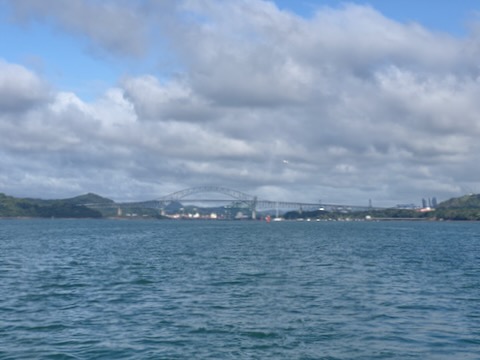
On Sunday I went to the Albrook Mall for groceries, to the Super 99. I decided not to fill both refrigerators to save electricity, and bought fresh food only for a week, so that only the small refrigerator would fit. I bought fruit for a couple of weeks - these are just green apples, because they keep best, and oranges. I think that without a refrigerator they would have spoiled if I bought them for the entire voyage.
The distance to the port of arrival Hilo on the Big Island is 4,540 miles. Considering the average speed of 4.9 knots, it will take about 39 days. This is exactly the same as it took me to make the longest passage from Darwin, Australia, to the French island of Reunion.
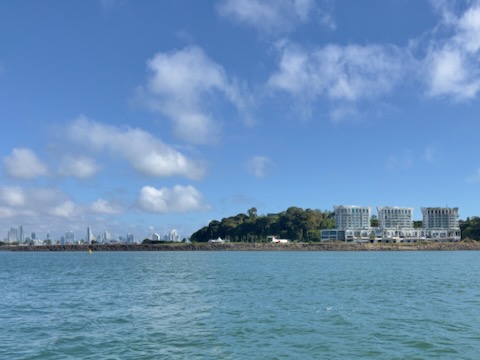
On Monday I thought about taking a taxi to the so-called Flamenco Island, where the immigration service and the port captain are located, to formalize the departure. But then I decided to take a risk and go there on a boat. The thing is that the so-called Balboa Yacht Club, where I moored for two days after passing through the Panama Canal, stopped selling diesel fuel and water. But they still charge $26 per day for a buoy. On Flamenco Island, which is actually a peninsula, since it is connected to Panama by an isthmus, there are a couple of marinas where you can buy diesel and water. I thought I would fill up and quickly run to check out.
However, I was cruelly let down. When I was already entering the Flamenco Marina, I contacted them on the VHF 10, because I could not find on their website or on the Google map where their gas station was. They turned me away and told me to come at 2 pm, because, they say, it was low tide. They should have at least said a word about low tide on their website! It was only 10 am. They also did not allow me to moor at any free slip. They said, like, drop an anchor behind the breakwater outside the marina and come to the marina in a dinghy. Oh no! I had already everything prepared for the ocean crossing. I had no plans to lower the dinghy again, etc.
Nothing to do, I go back to the Balboa Yacht Club to my buoy, angry with myself for not following the original plan. Against the wind and current for a distance of just over 3 miles it takes almost an hour.
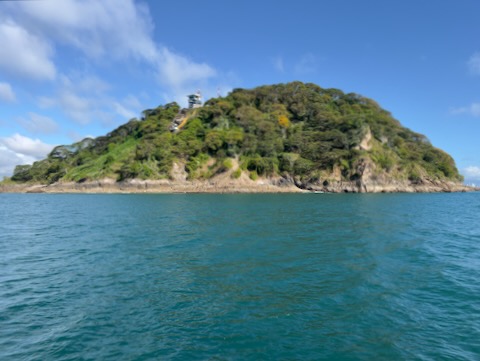
I take a taxi for 4 dollars to Flamenco Island. The immigration and harbormaster offices are in the duty-free center, which is next to the marina. First I go to the port captain. There is a man in the reception area who speaks passable English. He asked me to fill out several forms. While I was doing this, he glanced at the name of the boat in the form and was surprised - Beruta?!
It turned out to be Eric - my agent, with whose help I went through the Panama Canal! We were very pleased with each other then. I - for his punctuality and impeccability - everything went as well as possible, if you don't count the broken railing and along-the-wall mooring in the locks, which I did not request (it's definitely not his fault!). He - apparently, for my gratitude and a promise to recommend him to other yachtsmen. Of course, we did not know each other by sight, nevertheless, we were both happy with the unexpected meeting. He immediately offered to help me fill out all the forms. He took 106 dollars from me. This is not for his services. This, as it turned out, is the standard fee for a departure sheet, the so-called zarpe.
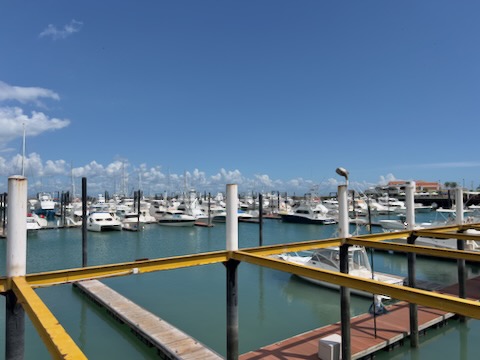
Then he went with me to the immigration service, where they stamped my passport. In short, with Eric's help, everything took no more than 30 minutes. I told Eric my story about trying to fill up with diesel in the marina in the morning, and what came of it. He drove me to another marina, which is nearby. You can also fill up there, and also after 2 o'clock. But they close at 3, and they also charge $35 for mooring at the fuel dock - well, that's too much! Imagine a situation where gas stations charge money not only for fuel, but also for parking at the pump!
To be honest, I thought that Eric would give me a ride back to the Balboa Yacht Club, but after dropping me off at the marina, he drove away. I had to find a taxi. This time they charged me $5. The drive was only 5-10 minutes.
I returned to Beruta at 1 o'clock - just one hour ahead of the high tide at the Flamenco marina.
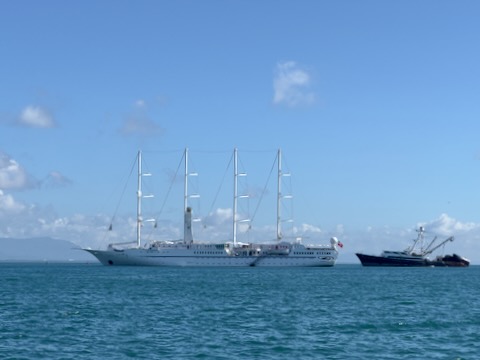
Exactly at 2 o'clock I enter the marina. They are already calling me on the radio, asking if I know where the fuel dock is. I say that it's my first time, and that there is no map of the marina on their website. They sent a boat to meet me, which took me to the fuel dock, and two guys helped me moor. First, I fill two 25-liter water canisters. Then I pour 4 diesel fuel canisters through a filter - it looks clean. In total, I have 6 water canisters and 9 diesel canisters. My fuel tank is 120 liters, and my water tank is 160.
I go to the office to pay. My credit card doesn't work in this marina either. I give them my last cash - $77. I ask if I can drink their water without boiling it. They say they don't recommend it! This means I can't. I still have two canisters of water from Aruba. That water is definitely drinkable. The same desalinated seawater as in Curacao, only 10 times cheaper! I paid $1.50 for 150 liters in Aruba.
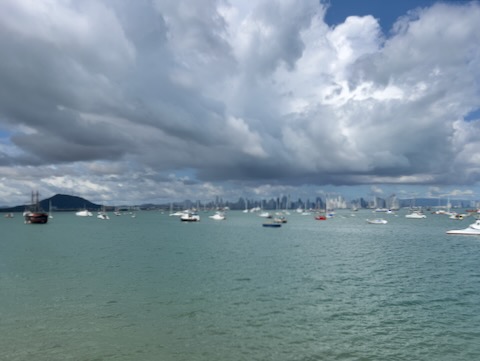
Well, it seems like all the work is done. I launch the nmea service on the Raspberry Pi, which reads data from the Raymarine devices and also writes a track. And at 3 o'clock I leave the marina. I set the mainsail. I maneuver between many ships at anchor, away from the Panama Canal. Having reached open water, I raise the jib. The wind is about 15 knots, between a reach and a broad reach. Starboard tack.
To celebrate the end of my misadventures in Panama, mainly related to their bureaucracy, which I talked about in the blog about passing the Panama Canal, and entering the Pacific Ocean, I open a can of Balboa beer.

Tuesday, December 17, 2024
I plotted a course away from the main traffic, so the AIS did not bother me at night. Nevertheless, I got up several times to see if there were any fishermen on the way. These are usually all without AIS.
The gulfwind combined with a tail current gave a speed of 8 knots at times! Panama City had disappeared from view very quickly yesterday. But all this pleasure soon ended in accordance with the forecast. Around Cape Morro de Puercos, the wind first died down, and then a headwind of about 15 knots blew. The current remained for some time, but by the evening it changed to an opposite, 0.5 - 1 knot. However, the wind died down to 10 knots.
I switched from the windpilot to the autopilot. I lowered the sails. I'm going on the motor. And so for another 450 miles! Weak headwinds of about 8-12 knots and a head current. Almost all the diesel fuel will go away! I wouldn't want to, but what can I do? I hope that the trade winds won't let me down later, and I'll only need to start the engine to recharge the batteries for an hour a day, or maybe even every other day, depending on the sun and clouds. Without a refrigerator, if I don't catch a fish, in theory I can do without an engine.

Sometimes I can help a little with the mainsail and even the jib, but not for long. The weather is sunny without squally clouds. Starlink works. I only replaced the upper slider on the mainsail. I should put something more reliable instead - like the aluminum slider that I had on the old mainsail.
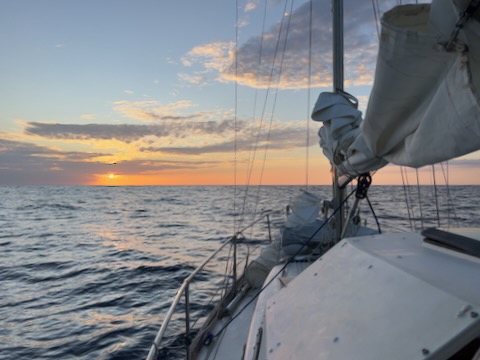
Wednesday, December 18, 2024
In the morning, everything as usual: yoga, shower with seawater, breakfast, updating the weather forecast, entries in the logbook.
In the afternoon I saw a couple of sea turtles, tiredly drifting in opposite directions. One towards Costa Rica, the other somewhere in the ocean!
I was fishing. There were two bites. It's hard to be sure about the first one that it was a bite. It twitched once, but it could have been anything: from a stick to the same turtle. The second time, a fish was definitely caught, but while I was getting ready to pull it out (I was getting out a gaff, rum, a yo-yo reel), it got away. Too bad. Shrimp on the third day already smelled unpleasant, and I didn’t want to eat them at all.
Thursday, December 19, 2024
I only managed to sleep in the early morning. There was traffic all night: fishing boats, brightly lit, but all without AIS, and cargo ships. One almost ran into me from behind, and turned away only at the very last moment. Were they sleeping there on watch? I was ready to steer away myself. The width of the cargo ship was 30 meters, or three of my hulls. I hoped that I could quickly cover this distance if necessary.
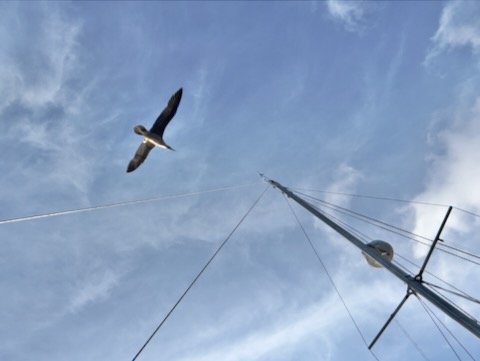
At lunch, I poured in 5 canisters of diesel, and thus freed up space in the cockpit, removing 3 empty canisters from it into the stern locker. Now I have a full tank plus 4 canisters.
Received a fresh weather forecast. Changed course from 287° T to 291° T to catch a favorable wind a day earlier - Friday evening.
At 8 pm local time (UTC-5) the wind died down enough to sail without Yanmar's help: 14-16 knots 50-60° to port. The weather forecast is roughly the same in terms of wind direction, but 5 knots less in speed.
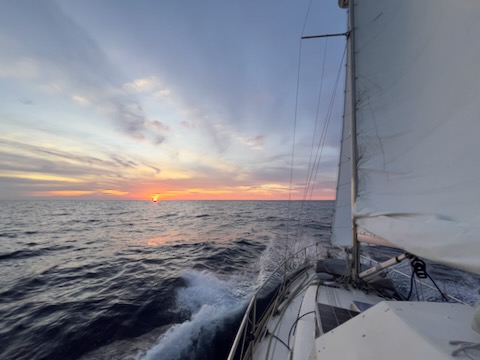
Friday, December 20, 2024
How comfortable it is to sleep with the engine off! A pleasant beat with a slight list to starboard, right where my bench is, I mean, my sleeping place.
At 2 am the wind came up again, as expected. I had to start the engine and take in the sails. Even though it was 6 hours, it was still fuel saving.
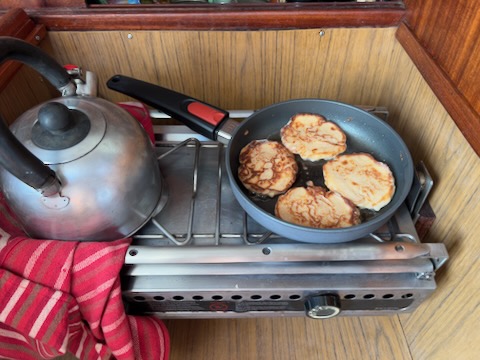
In the morning the dolphins came. It was obvious that the yacht's low speed against the wind and the waves did not suit them. So after a couple of minutes they went to look for other entertainment.
I decided to treat myself to some pancakes.
After lunch, I managed to sail, using the engine. But by sunset, everything was quiet again. I had to take in the jib and leave only a third of the mainsail to reduce the rocking on the waves.
At sunset, I passed the 500 nautical mile mark. The average speed for these days was exactly 5 knots, which is quite good, considering the weather conditions.
At 9 pm, when I was already asleep, it blew again, and the wind shifted enough that we could sail only under the sails. 10-15 knots, close-hauled, turning into a beam, starboard tack.
Thus, I managed to cover a 400-mile zone with relatively weak headwinds and currents in three days of engine operation. I thought it would have taken four. An additional supply of diesel is always nice!
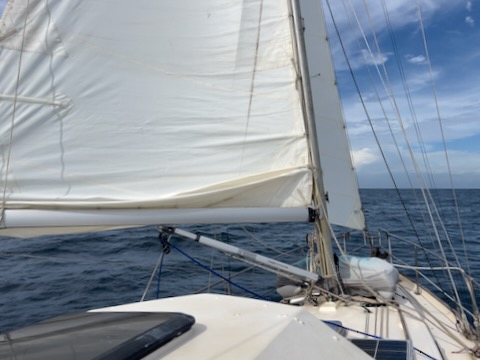
Saturday, December 21, 2024
I kept getting up at night and adjusting the course. Firstly, I wanted to go around the Guardian Bank. It looked very dubious. The Navionics charts simply listed depths reported in such and such years. These were numbers from 12 to 42 meters. The bank itself was not listed. On the Admiralty charts in iSailor, the bank was outlined, its name was given, and the comments said that its position was dubious and that it probably extended further to the east, although the shallow depths were to the west of the bank. Around it on both charts were very deep depths from 1 to 3 km! It is difficult to believe in the reliability of this information, since then it would be a very steep underwater rock or rocks. But better safe than sorry, as they say. So, if it was possible to go around it without much difficulty, then why not do it?
In short, instead of the true course of 183 degrees, I had to hold 170.
And secondly, on Sunday, if I had held the right course, I would have encountered gusts of wind up to 32 knots. Not fatal, but if you can avoid them, then why not?
It should be noted that the last two nights the traffic has significantly decreased. Last night I saw only one cargo ship and one fisherman. This morning, too, a light was visible on the horizon, similar to a fisherman's. There was nothing on the AIS.
I approached the bank at dawn. The wind was a reach, turning into a broad reach, 12-15 knots, apparent. Thinking that the wind would continue to strengthen, I took the second reefs on the mainsail. With the jib, the speed is about 6 knots.
Usually there are always more birds and fishermen over shallow water. But here it was empty. I turned on the echo sounder just in case. And indeed, it showed values of 13 and 7 meters a couple of times. But these readings were not very credible, because there was no visible dynamics! One reading, and then an abyss. Well, let's say not an abyss, but depths greater than 100 meters - the Raymarine depth sounder does not probe that deep. Most likely, some thermocline passes here, from which ultrasound is sometimes reflected. There is no bank here.
Having passed the so-called bank, I changed the course to 175 degrees. I need 188, but in the evening forecast, there is a strong wind there. If I keep going on course 175 all the time, then somewhere on Sunday a gusty wind will reach there. Therefore, from about 7 am on Sunday, I need to go higher, that is, lie on the required course. Nevertheless, gusts of up to 28 knots (according to the forecast, in reality, apparently more) cannot be avoided. But such weather will last, again according to the forecast, only a few hours. Then there should be a normal trade winds of about 15-20 knots.
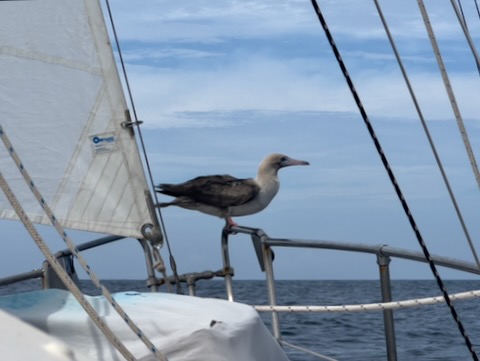
The map shows the north equatorial current right behind the bank. And in fact, it adds about half a knot to the speed, which is always nice!
Around 11 o'clock the wind did not increase as I expected, but on the contrary, it died down a little. I loosened the second reefs.
Today is the shortest day. Between the 9th and 10th latitudes, the day is shorter than the night by only about 20 minutes. Less than 4,000 nautical miles are left to Hawaii.
Right after I posted this update on the website, I loaded the latest grib file in the PocketGrib app. The forecast had changed, and now, in order to avoid the strong wind (32 knots in gusts), I should have followed my course of 288 degrees. Gusts of up to 30 knots were predicted at night anyway.
I'm laying down on my course.
Not even a week of my solo voyage has passed, as I began to hear voices. It's a bit early. I even thought that maybe the iPhone started talking to itself, maybe the artificial intelligence woke up in the new version of iOS? Later it turned out that it woke up in the iPad! The iPad was lying in the table turned off, but apparently the rocking hit the power button on something, and it turned on. This has happened before. Here it was, talking to itself!
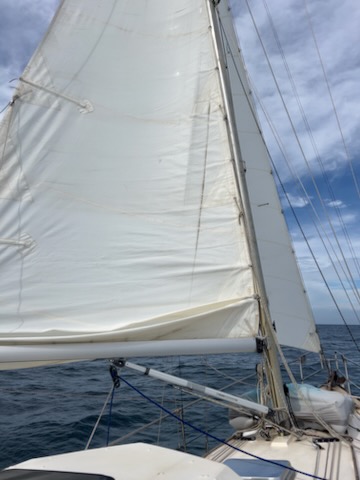
In general, the stories about how people at sea used to think that these voices were nothing more than the talking souls of dead sailors are quite curious. After all, in those days, people didn't sail alone, and I think there were always a lot of other sailors around, and there was someone to talk to. So, loneliness has nothing to do with it?
Oddly enough, but by evening the wind began to die down, and at 8 o'clock I was forced to undo the third and second reefs on the mainsail and change the storm jib to a regular one. Even this didn't help - the wind died down to 5-7 knots, and the speed dropped to 2-3. I didn't really want to go to the bow to change the jib to a genoa and undo the first reefs on the mainsail in the dark. In addition, there was no certainty that it wouldn't blow again soon. The forecast say 30 knots, right?
Sunday, December 22, 2024
So Beruta was barely crawling along until 3 a.m., when the wind finally increased to 14 knots, and by 6 a.m. to 18. I had to take the second reefs on the mainsail. But an hour later the wind died down for the umpteenth time. I removed the second reefs. That's the whole romance of sailing - working with reefs!
The weather today is cloudy, cool and humid. Probably, the Arctic current, which goes along the coast of North America, plays a role. In the cabin at night it was 28 degrees C. Before that, the temperature was always 32. There has been no rain so far, although in the weather forecast almost every day I see millimeters of precipitation. Actually, there were practically no clouds either until today.
Today I was lucky enough to watch a manta ray jump! Unfortunately, there was no second take for the camera.
In the evening, I turned on the engine for an hour to recharge the batteries and provide power to the energy-consuming Starlink. I downloaded the weather forecast. They are predicting gusts of up to 22 knots at night. Strangely, the wind is dying down again. It looks like the forecasters were wrong once again.
Monday, December 23, 2024
And so it turned out. The sails flapped almost all night. The wind was 5-6 knots, apparent, broad reach. Only before dawn did it blow a little, just enough so that the sails did not flap, that is, 7-9 knots.
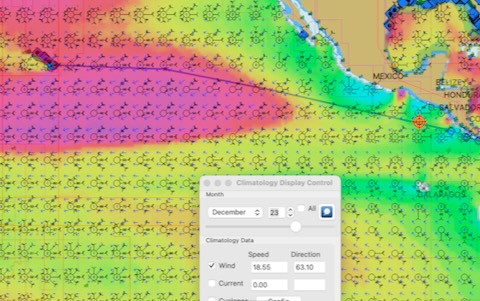
In the morning, the wind increased a little more to 8-10. I am starting to think about replacing the jib with a genoa and undoing the first reefs on the mainsail. There are still almost one and a half thousand miles to the stable trade winds. The climatological maps say that the wind will remain at 10-12 knots. In the second half of the voyage, they are predicting 17.
At night, besides a couple of flying fishes, about a dozen small squids were brought aboard Beruta by the ocean. I had a thought of calamari but refused to deal with such small ingredients.
There were a lot of gannets. It was interesting to watch how they hunt for flying fish. They either catch them in flight or at the moment when they land on the water. In general, gannets have the same habits as seagulls: why catch something yourself when you can take it from a weaker one? This also applies to the human race - like other animals! Have you watched these popular videos on YouTube by Zhenya Timonova? It will take humans a long time to get rid of such a rich heritage.
It is sunny today, although the forecast is for 10 mm of precipitation! Where do they get it? From the air!
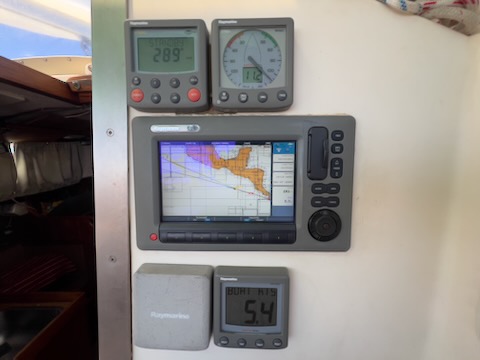
Apparently, while I was trying to chase the gannet off the pullpit, another one landed on my mast. It could have happened a little earlier or a little later. It was already getting dark. I turned on the masthead light (tricolor) and looked up to make sure it was working. In the light of the white stern light, something was fluttering in the wind, like a ribbon or a piece of a line. I looked at the navigation instruments. The anemometer showed nothing: neither wind direction nor speed. I didn't see the vane on the mast either, even when I shone a flashlight there. It looks like my anemometer is gone.
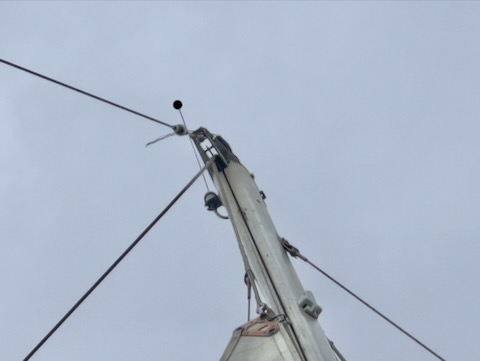
Tuesday, December 24, 2024
In the morning, that's exactly what it turned out to be. What I took for a ribbon or a piece of a line turned out to be the anemometer wires. The anemometer itself was not on the mast! It couldn't have broken off on its own. It has been standing there on a steel bracket for 17 years. So, the gannet must have landed to it. Damn it! Now I am left without an important instrument. It is not the end of the world, of course, but unpleasant. I was so attached to it! And it costs about a thousand bucks, if not more. It would be difficult to find one now that is compatible with the old Raymarine SeaTalk system. Either you would need to look for a used one, or contact the Raymarine service center. Maybe they still have these anemometers in stock. This will be done on the Hawaiian Islands, but there is still a month of sailing there. Too bad. I was upset. To paraphrase Timur Shaov's song about a sofa-type kitten and feral cats, when discussing dogs one of the cats says: "I respect Koreans, they eat this scum.", I would say: "I respect Scots, they eat this scum." Now I know what I would use for a pneumatic riffle that I wanted to buy in New Zealand that shoots for 100 meters!
At night, the sails flapped, probably for a couple of hours from 3 to 5. Mostly there was a slight blow. The current helped as well.
The speed is more than 5 knots on average. I sail more than 120 miles per day. It seems there is no particular reason in switching to a genoa yet. Besides, the wind will be stronger close-hauled.
Around 10 a.m. the wind began to pick up, and I had to take in the jib and main sheets. Now Beruta was not reaching, but sailing close-hauled. According to the forecast, if you can trust it, the wind should go in by another 10 degrees.
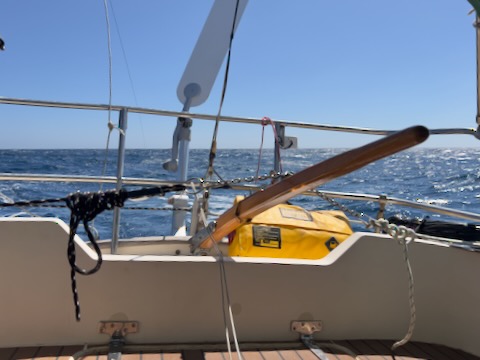
A detailed examination of the photo of the mast top shows that the anemometer base remained screwed to the bracket. The vane on which the spinner was attached and through which the wires ran, broke. Obviously, this "chicken" with a wingspan of about one and a half meter tried to sit on this vane and broke it. I have seen gannets trying to sit on the mast more than once, but they usually fail.
At lunchtime I loosened the first reefs on the mainsail. The speed increased by almost a knot. It was 4-5, now 5-6. Genoa can wait for now.
Today at 17:16 I have covered exactly 1,000 miles. The average speed at this point was about 5.1 knots. There are 3,540 miles left to Hawaii.
Closer to midnight, I had to take a couple of reefs on the mainsail, the wind was blowing at about 20 knots. It's good that I didn't put the genoa, otherwise I would have had to fiddle with it in the dark.

Wednesday, December 25, 2024
The wind began to die down by morning, and somewhere before dawn it completely died down. I waited about 30 minutes, saw that the sky was covered with clouds, and I would still have to recharge the batteries, and started the engine. I turned on Starlink to download the latest weather forecast. Yesterday's was quite disappointing. I'd have about another week of weak headwinds. It looks like I'd have to go down a bit to the south. It seems to be blowing more steadily there, and not straight into the nose.
About 30 minutes later, however, it blew again. I even took a couple of reefs on the mainsail, then released one when I had already turned off the engine. Still a sharp beat. During the day they are predicting a pure headwind with gusts up to 22 knots.
Switched to UTC-6. I am somehow more used to the sunrise at half past six in the morning and the sunset at the beginning of six in the evening.
The wind changed all day and all night. Sometimes it would blow, other times it would die down, yet other times it was tailwind, and another times it was broadwind or even headwind. It seemed like I was passing through a local area of high or low pressure. Even a few drops of rain fell when it was already dark.
It was cloudy all day, and in the evening it even became cool. The weather forecast says that the temperature is 23 degrees Celsius, and this is at the 11th latitude! Not a summer for sure!
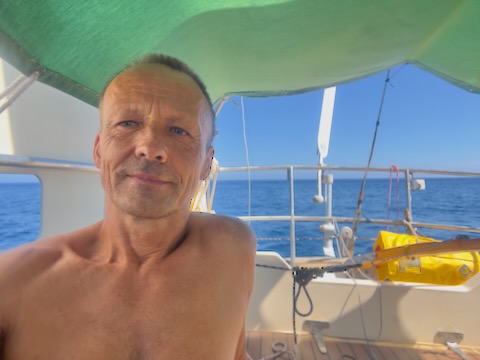
Thursday, December 26, 2024
At night I even covered myself with a sheet - it was so cool. Although the temperature in the cabin was still 27-28 degrees.
Somewhere closer to midnight the wind died down again. I did not want to release the reefs as a precaution that it would blow again. But it never did. At 4 a.m. I raised the full mainsail, and after breakfast I replaced the jib with a genoa. Course 210-230° T. To Hawaii 286° T. Somewhere around Saturday the wind should shift down a bit, and maybe it will be possible to keep the desired course.
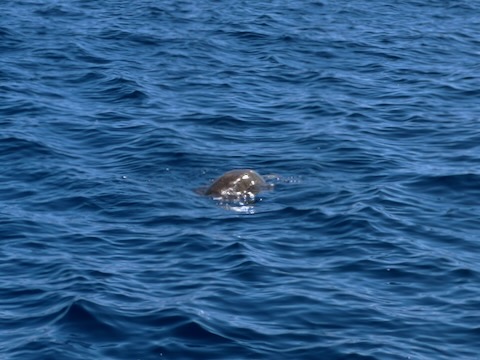
The ocean is really calm! No waves, no swell. There is no wind, and the sails are not flapping. And this is nice, the calm is not so annoying.
On calm water, ocean life is clearly visible. Here is a turtle swimming by, and there is a small tuna jumping. Here is something swimming right from under the yacht, similar to a small turtle or a frog - you can't really see it. About half a meter or so from the surface of the water a mass of jellyfish is floating along with small squids. I ran into a small log, from which a school of small blue fishes similar to those that you may see among coral reefs, rushed under Beruta but a bigger fish looking like pufferfish but twice the size, remained under the log. I cast the line, and under the pink squid bait flashed the silhouette of either a shark or some other big fish. By the way, the number of plastic bottles already covered with a marine growth, is also impressive.
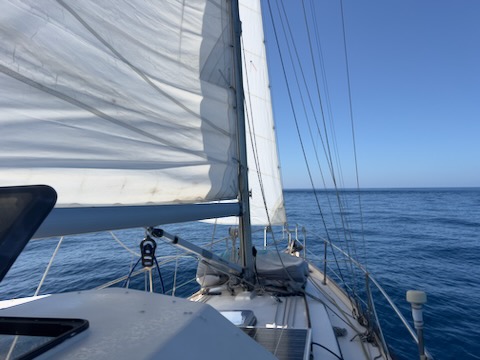
Periodically I pass through some strips of turbulence of the seawater, either a current or something else. They are not only clearly visible on the smooth surface, but also clearly audible from afar. The water is seething like a riffle. I would say a current, but why is it of such a limited size? 200-400 meters in length, and probably no more than 100 in width.
At 2 o'clock in the afternoon I tacked partly so that the sun would illuminate the solar panels (on the starboard tack they were in the shadow of the mainsail), partly to go in the right direction. The course on the port tack is about 320° T, which is closer to the required one than on the starboard tack.
At some point, something hit the rudder blade of the windpilot. I looked and saw a school of young tunas under the yacht. I pulled the fishing line closer to the yacht. The tunas immediately responded to the bait, but no one dared to try it. Apparently, at low speed they could see it well and recognize it as inedible. While I was making up a second line with other baits, the tunas disappeared.
The wind was turned off when I was still motoring, charging the batteries. I had to take in the sails because there was a swell, and they flapped unpleasantly.
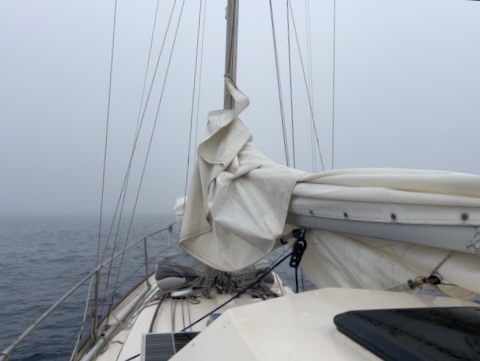
Friday, December 27, 2024
Fog fell at night! The forecast was for a temperature of 25° C, and humidity 85%. It was 27-28 in the cabin, but due to the high humidity it was still cool.
It blew a little at about 3 a.m., although it may have been earlier, but I was sleeping and did not notice. The last time I went out to check the wind was about 10 p.m. I set the sails, but an hour later everything was calm again.
At 8:30 I started the engine to charge the batteries and at least move a little to the west. According to the climatological charts, I need to sail away from the coast. Therefore, I am keeping a course of 270° T, not 286° T. According to the forecast, there will be no wind all week, and I have a little more fuel than one tank, about 140 liters. This is just for 3 days motoring, if I leave nothing in reserve. I think I can only afford to motor for a day.
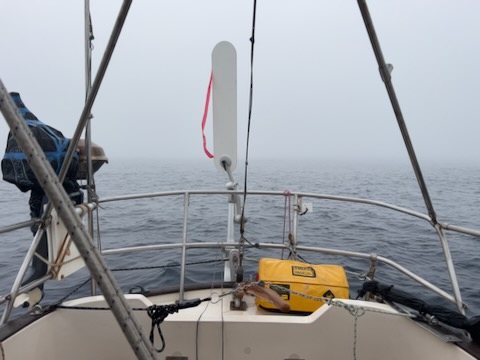
Hm, unpleasant pre-New Year weather. I didn't think I could stick here for a long time. As I said, the pilot charts show a 12-knot north-east wind, which is quite enough for a normal speed. I console myself with thoughts of the old days, when there was nothing but sails and oars. And somehow people sailed! The main thing is to be patient, and hope that there will be enough fresh water, food and diesel for the rest of the voyage.
At 11:30, I turned off the engine because a breeze started blowing. It was in the forecast, but only until the evening.
The weather forecasters have lost all credibility. Maybe this is how they react to Trump's victory? Are they on strike or sabotaging? Maybe I should switch to European sources? Sometimes they predict a northwest wind, but the southeast wind blows, sometimes they promise 3-5 knots, but at least 10 is blowing.
For this night, they promised calm, but it blew 10-15 knots, an apparent wind, and from under the clouds it was 18-20. I was tempted to go and take reefs on the mainsail, when it started howling in the shrouds. Only a low speed relative to the water, about 5 knots, stopped me. The speed relative to the ground reached 8 knots at times!
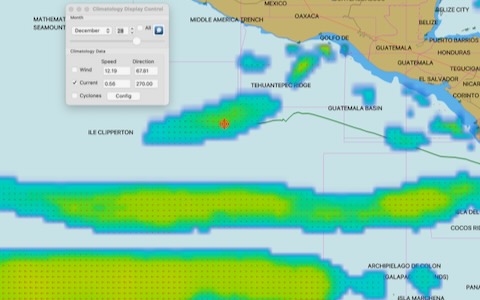
Saturday, December 28, 2024
In the morning I looked at the pilot charts. It turns out that I am in the northern arm of the equatorial current, if I can say this. The main arm is further south and longer. This one extends for about 500 miles, but in January it shifts to the west, that is, it actually becomes longer.
To say that I am holding a certain course would be wrong. I am sailing close-hauled (about 40° to the wind), on the starboard tack. On average, I manage to sail west, sometimes taking a little further north on gusts, sometimes going down to the south when the wind weakens. It does not work out to sail on a course of 286° T to Hawaii.
Somewhere from Thursday of next week (after the New Year) they promise that the wind should shift east, and then it will be possible to go straight to Hilo.
Human nature is amazing. When I was in the mountains, I dreamed of the time when I wouldn't have to climb with a heavy backpack, but could calmly drink beer and read interesting books, while the yacht would take me where I needed to go. Now, after almost two weeks of sailing, it's the opposite. I would love to walk with a backpack in the mountains! Limited space, and most likely, low mobility, cause such desires. Morning exercises and yoga are not enough to keep yourself in normal physical shape. I hope to make up for it in the Hawaiian Islands!
It was already getting dark when, a couple of hundred meters away on the starboard side, dolphins started a high jump competition! I don't think I've ever seen such high jumps even in dolphinariums. The champions seemed to be 2-3 body length above the water! Well, I'm telling you, it was already getting dark.
The wind stopped around 11 p.m. Right on the horizon, right ahead, a light of some kind of a fishing vessel was shining. I was about to write that I hadn't seen a single vessel in the last couple of days. I started the engine and set a course of 310° T to leave it on the port side.
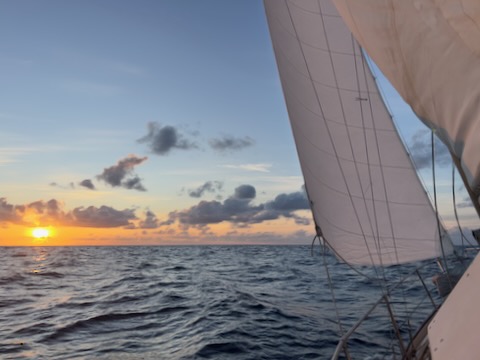
Sunday, December 29, 2024
In two or three hours, the light disappeared from the view astern. A light breeze allowed me to sail with all sails sharply beaten straight to Hawaii on a course of 286° T, helping with the engine at low speeds.
At dawn the wind died down and I was only able to keep a course of 263° T, approximately to the uninhabited Clipperton Atoll, which formally belongs to French Polynesia. It is still 360 miles away, but the speed is still high due to the current: 7-8 knots. According to the forecast, the wind is a couple of knots stronger to the south of the atoll than if you go around the atoll from the north, keeping a course strictly to the west. As I've already said, there would be practically no wind until Thursday. And I have fuel for a maximum of a couple of days, including today. Apparently, I will have to drift with the current, if there is still one.
At 2 pm a breeze blew, and it was possible to turn off the engine.
Taking advantage of the calm weather, in particular the calm ocean surface, I poured 3 canisters of diesel into the tank, running it through a 30-micron Racor P20 filter. I left one canister as an emergency reserve. In total, I have 130 liters of diesel.
Got a haircut. It is more pleasant to do this when there is no rocking.
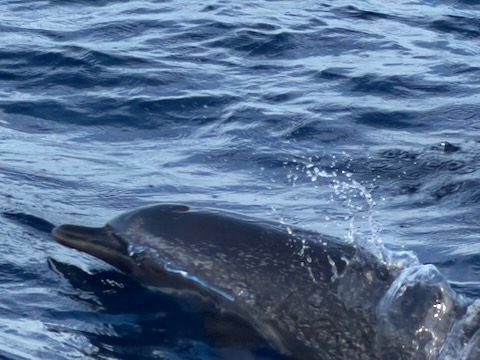
At sunset, there were exactly 3 thousand miles left to Hawaii. Thus, a third of the way has already been covered. It took almost 2 weeks, or more precisely 13 days, which corresponds to the initial estimate of the route length of 39 days. The average speed for the entire time was 5 knots. One canister of water was used for drinking and cooking - 26 liters (2 liters per day).
Monday, December 30, 2024
I woke up when the sun had already risen. I leave the cabin and look at the sails. The genoa's tell-tales are sagging. I ease the sheets and realize that close-hauled has changed to reaching! A pleasant pre-New Year's gift from Mother Nature. I ease the main sheets. The speed increases from 3 to 5 knots. At night, I went out to the cockpit a couple of times, shone a flashlight on the sails - it was close-hauled.
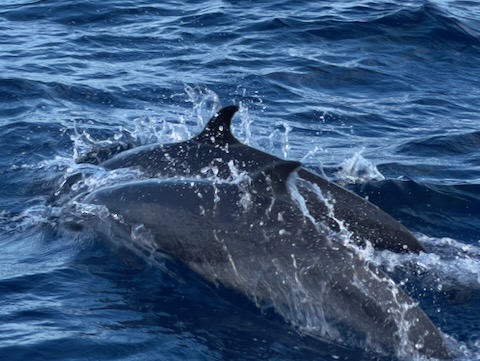
And here comes a large group of small dolphins. You can't count how many there are!
After lunch, I watched a bird that looked like a gannet in shape, but its coloring and manner of catching fish were completely different. Google says it's a blue-faced gannet. It has a black and white mottled shape, and it dives for fish from a height, diving and trying to catch it underwater.
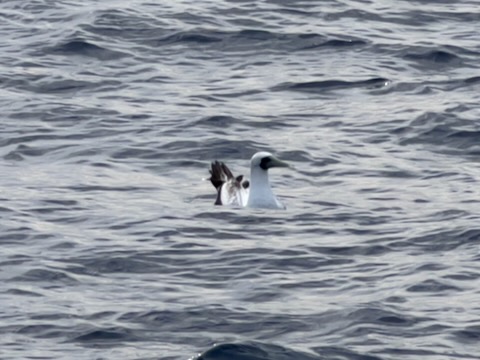
Yesterday I finished reading the philosophical book by theoretical physicist Sean Carrol "The Big Picture". I somehow got through it. Apparently, philosophizing is not my thing. But I really like the author. I have watched his lectures and interviews with him on YouTube many times. There he formulates the content accurately, beautifully and clearly. In the book, everything is very inflated, a lot of repetitions and many unnecessary, in my opinion, discussions of theology and religion from the point of view of science. He is a supporter of poetic naturalism, a model of the world that is described within the framework of moderate gravity and not too high energies by the Core Theory, and a supporter of the statistical approach to physical models of the world, using a priori and a posteriori probabilities of their plausibility, based on historical experience and the results of modern experiments. He compares physics with mathematics. In the latter, everything is based on initial assumptions (axioms) and subsequent theorems, strictly proven on the basis of these axioms using formal logic. In physics, the conclusions from the theory obtained on the basis of initial assumptions must be verified experimentally. If the theory corresponds to the experiment and is internally consistent, then it can be considered correct with a high probability.
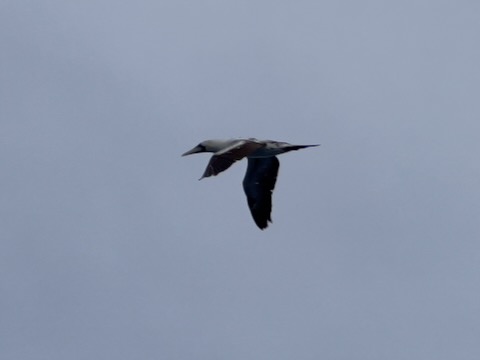
The author does not deny the existence of God and everything connected with him, but attributes very low credences to these hypotheses. Sean talks a lot about the meaning of life, goal-setting and causality, concepts that are not fundamental from the point of view of quantum field theory, but appeared in the process of evolution of the universe that arose after the Big Bang, as a result of which time was created and entropy arose, and with it the complexity of the universe began to increase. One of the main ideas of the book is that the same properties of the world can be discussed at different levels, using the appropriate vocabulary, for example, quantum or classical mechanics, chemistry, biology, psychology, economics, politics, but it is completely wrong to mix these lexicons.
Much attention is paid to morality: what is good and what is bad. In his opinion, there is no single rule for everyone, and everyone must determine this for themselves.
In the book "The Big Picture" themes regarding pseudoscience such as telepathy, telekinesis, dual nature of a human being (body and soul), a life after death, a supernatural foundation of consciousness, take a lot of space. I wouldn't spend my time talking about these things. Sean admits that a human would naturally defend their planets of believes. Therefore, I doubt that he convinced anyone to change their believes. In my opinion physicists should not add more oil into the fire and talk about god or other mysticism at all. Sooner or later the people who believe in those things will die, being unable to survive the natural selection.
Today I started reading a more informative book by Brian Greene "The Elegant Universe. Superstrings, Hidden Dimensions and the Quest for the Ultimate Theory". Here, already in the first chapter, it became clear that elementary particles such as electrons and quarks are not points, but one-dimensional loop strings. For example, it seems intuitively reasonable to me to give shape to particles that have certain properties, such as mass, charge and spin. It is difficult to endow a point that has no size with, for example, mass, not to mention charge or spin. After all, if there is no volume, then what is this mass contained in? Even if we speak in terms of energy. This is not just a quantum of the electromagnetic field, such as a photon, which has no mass, no spin, no charge, and which is not a fermion at all - what matter consists of, but a boson - a quantum of the electromagnetic field. It is difficult to imagine a chair or a table consisting of dimensionless electrons and quarks, but occupying a very definite size in a room. It is quite possible that these superstrings in turn also consist of some particles, like electrino or quarkino, by analogy with neutrino, which has some insignificant mass, which has not yet been properly measured.
After sunset, the wind shifted to a stern and became fair. The genoa had to be removed because it was in the shadow of the mainsail and was flapping.
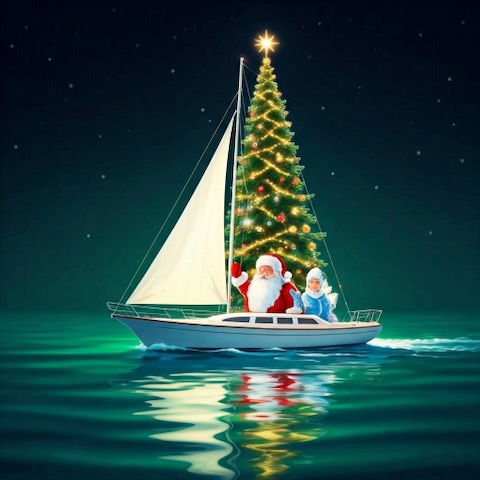
Tuesday, December 31, 2024
However, at about 4 a.m., the wind came again and blew between close-hauled and reaching. The genoa went into place. And I had to take two reefs on the mainsail because the wind began to howl in the shrouds. This usually happens at 18 knots and above. The forecast was only 6-8 knots...
At dawn, the reefs could be released. I left one because there was a good wind blowing from under the clouds at times.
There was a bite. I look, and behind the stern in the place where the bait is, the shark fins dissect the waves. Wow, did the shark peck at the pink squid? Maybe some small fish was already caught, which I did not notice? After the second jerk, the fin disappeared, and in place I again saw a pink squid. Well, at least I don't have to deal with the shark.
After lunch, I also released the first reef. However, by the evening I had to reduce the area of the mainsail again so that I could sleep better. The speed was over 6 knots with full sails. Everything was going well, and soon the genoa would have to be replaced with a jib.
Happy New Year! Best wishes to all my friends, relatives, people who I know and don't know but who follow my adventures, from the Pacific Ocean aboard Beruta!
As for genoa, it indeed happened. Having finished congratulating everyone under the noise of the motor at idle, I left the cabin, and the speed of the yacht was 7 knots! Because of the engine, I did not hear what was happening outside. To begin with, I took the second reefs on the main, and then went to replace genoa with the jib. Wow, I had the spectators! Above - gannets, below - dolphins!
Having finished with sails, and reduced the speed to acceptable values (5 - 6 knots, 6.6 knots on gusts), I began saying bye-bye to year 2024 with Andrei Makarevich and the Ensemble of Creole Tango and a bottle of sweet red wine.
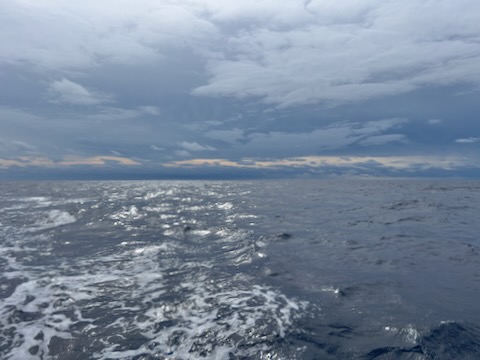
Wednesday, 1 January 2025
Happy New Year! Yesterday, of course, I did not wait til midnight (UTC-6). Today I will rewind the clock an hour backward. I have almost passed the 108th Western meridian.
At night in the south there were lightenings! But thunder was not heard because of the north wind. In the morning, the clouds approached so much that even despite the wind, the deaf peals of thunder often came to Beruta. The forecast shows that there will be no rain, and these clouds will remain south of my course. Of course, I would not want to get into a thunderstorm.
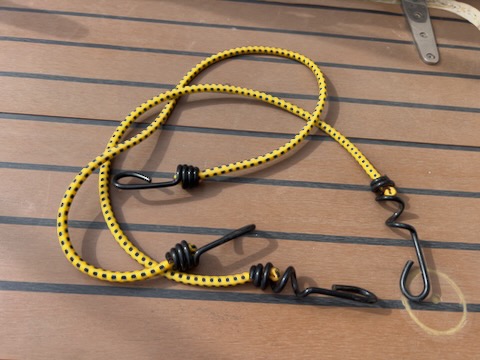
A large flock of blue-faced gannets flew. I decided to shoot them. I went out with a camera in the cockpit, and then there was a tremendous pull on a fishing rod! The hook that held the bungee cords on the pole apparently broke. Metal springs on bungee cords stretched. The fishing line, which was actually a rope, was torn. A huge group of dolphins swam behind the stern! And how should I interpret this? Now they will break my tackle so that they get more fish? Some kind of bad joke on their part. Bastards! Birds break anemometers, orcas - rudders, dolphins - fishing gear. What is going on?
It was cloudy almost all day. In the evening I ran Yanmar at idle for a couple of hours to charge the batteries.
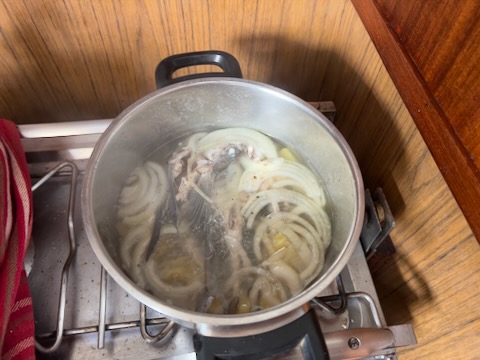
Thursday, 2 January 2025
Today, I have already passed 2 thousand nautical miles. 2,500 left, approximately. It's not yet half, but soon it will be, in about two days.
Nothing special happened during the night. Chartplotter beeped a couple of times, informing me that it lost GPS coordinates. This happens to it periodically. All my internal GPS work uninterruptedly. Apparently, the problem is with the chartplotter, which is not surprising, knowing who made it - the notorious Raymarine. It awakes me at night for nothing.
For lunch I made a fish soup from what I found on the deck. What do you do when the fish is not cooperating? Go and harvest mushrooms! As my cat Botya once walked every morning on the deck around the yacht and collected what Neptune sent him.
A pattern working with the reefs is repeated every day. In the evening, the wind intensifies, and you need to take reefs. At night, different things happen. Sometimes the wind intensifies further like today, and there is nothing to be done - you have to get up and go with the flashlight to take reefs, but sometimes it subsides, and then, if you want to sleep, then do not give a damn about speed. The morning is wiser than the evening. But in the morning, as a rule, the wind subsides, and the reefs must be undone.
Friday, 3 January 2025
Well, after such an explanatory note or, as it is fashionable to say today, the disclaimer, I may no longer write about working with reefs.
The apparent wind completely died, because it shifted, and became almost fair. The jib worked on the verge of flapping due to the shadow of the mainsail. The speed reduced to 4 knots. Relative to the water, even more, but the situation did not look so deplorable, thanks to the current speed of almost one knot.
At 2 p.m. the wind blew again to the starboard side. And by the evening it began to intensify. And then you know what follow: reefs on the mainsail.
Saturday, 4 January 2025
The strong wind (about 18-20 kts) was blowing almost all night. I sailed with three reefs on the mainsail. Only at dawn I undid two.
The weather is mostly cloudy. It is good because it's not hot, but bad because the batteries are not charged. I figured out how and where to put two large solar panels, about 400 watt each, in order to solve the problem of energy supply once and for all. Well, in fact, there is only one place - the stern. I just need to place them not across the yacht, as it is now, but along, so that the backstay passes between them. This requires another pole and crossbar. I will work on this project in Australia, when not busy with other things. I have one 200 watt panel at the stern, and the other is 130 watt in front of the pilot house. The one that is in front of the pilot house is now almost all the time in the shadow of the mainsail, and practically does not work.
Today I sailed half the way. I hope that for the second half it will take a day or two less than for the first one, because of stable trade winds and constant reaching.
Yesterday I still thought that I was getting off from gannets, but it wasn't the case. They, as before, are trying to arrange an overnight stay on a solid ground. I drive them away with an air gun.
Sunday, 5 January 2025
There was a stable wind all night. I sailed under two reefs on the main. In the morning I didn't even have to undo the reefs - the wind practically did not change. A following current added about half a knot to the speed through water. The waves increased, according to the forecast, to 2.2 meters with a period of 4 seconds. The speed is about 6 knots. I made 147 miles per day. The average speed over the entire time increased to 5.1 knots.
In the mornings and evenings, it is still cloudy, but during the days and the nights it is more or less clear. Every day it becomes cooler and cooler. Soon, apparently, I will have to dress, at least at night. The wind is cold. I need to cover myself with a sheet at night. I have already reached 15° N. The day here is shorter than the night for about 40 minutes now. Hawaii are at 19° N. The Panama Canal is at 8-9° N. Cape Morro de Pueruros is at 7° N. Thus, the scatter along the latitude on the route from Panama to the Hawaiian islands is approximately 12 degrees, or 720 nautical miles from south to north.
I repaired the fishing rod. So far no catch.
In the evening, the autopilot forced me to take the third reefs on the mainsail - it began to bear away, trying to keep the yacht on course when the wind strengthened, and the jib began to flap in the shadow of the mainsail. As luck would have it, the wind immediately died down. I endured until midnight, then finally let out the third reefs.
Monday, January 6, 2025
The fourth week of my second voyage across the Pacific Ocean has begun. There are 2,000 nautical miles left to the Big Island. So far, the day of arrival in Hilo is Wednesday, January 22.
Today I crossed the 120th west meridian. Now I can switch to Pacific time (UTC-8).
During the day, the wind died down so much that even with all sails, Beruta was going at a speed of 5.5 knots.
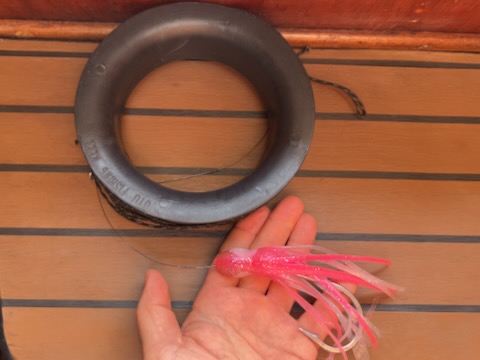
At sunset, I caught a small dorado, but I couldn't pull it out - it broke off halfway. What a shame! I think the small hook is to blame. I was given these hooks on St. Helena when I was left without any hooks. Before, I had hooks one and a half to two times bigger.
Tuesday, January 7, 2025
Today is cloudy and windy. I sailed under three reefs all night, and was thinking of either lowering the mainsail completely or replacing the jib with a storm one. The speed was 6-6.5 knots. The average speed for the entire time increased to 5.2 knots. There was not even a hint of a strong wind in the forecast. There were 14 knots, but the wind was probably 20-25. From 8 a.m. it calmed down a bit. In the forecast, everything was the opposite. There the wind was supposed to strengthen from 14 to 16. Note that this was the forecast for the next 24 hours, not 3-5 days in advance, when, of course, it may be inaccurate.
There was no sun for almost the whole day. To charge the batteries, I had to run the engine for two and a half hours at idle.
Wednesday, January 8, 2025
At about 3 a.m. I pulled down the rest of the mainsail - the speed was over 6.5 knots in gusts. I'm sailing under one jib. At first, the speed dropped to 4-5 kts relative to the water, but there was a current of about 0.5 knots. Then the wind got stronger, and the speed became 5-6 kts plus the current. The waves grew to 2.2 meters with a period of 12 seconds according to the forecast. I wonder what they really are like, if the forecast says the wind is 12-14 knots, but in reality it's over 20? At first glance, it seems that they are like that.
I still have an unrealized idea of measuring the wave height with a barometer, using it as an altimeter. Now it takes readings once a minute - for the weather this is more than enough, but for the wave height, of course, it is not enough. But the chip allows you to read data much faster than the wave period. The accuracy of the barometer, if I remember well, should allow measuring heights with an error of plus or minus 0.1 meters. I need to check. Actually, the spec says that plus-minus 1 meter. Hm...
I looked at the code of my Bosch BME280 chip driver program. When outputting, the pressure is rounded to tenths of a millibar. I ran it for one minute with a period of 1 second to get 60 pressure values. The spread is plus or minus 0.25 millibar. All that remains is to convert this into meters to get the wave height. Of course, you can empirically determine that 0.1 millibar is approximately one meter, because the forecast wave height is 2.2 meters, but it indicates the so-called significant wave height. By definition, this is the average value of a third of the highest waves. The period is about 6-12 seconds, on average 9. I can determine everything more precisely if I make a larger sample, say, not one minute, but one hour, and round the pressure to hundredths of a millibar.
ChatGPT gives me the approximate formula for calculating the altitude based on the atmospheric pressure:
Height (m) = (1 - ((Pressure (mbar) / 1013.25)) ^ (1 / 5.255)) * 44330
1013.25 is the standard fixed pressure at the sea level. It seems that for calculating the wave height, the ratio of pressure at height to a pressure at sea level is important, but not the absolute values. Hence, I could use the ratio of the pressure at the crest of the wave 1,018.2 mbar to the pressure at the trough 1,018.7 mbar, exponentiate it, subtract the result from 1 and multiply by 22165 (we need to divide by 2 because there are two wave heights between the crest and the trough) or:
(1 - ((1018.2 / 1018.7)) ^ (1 / 5.255)) * 22165 = 2.07
Therefore, the difference in pressure of 0,25 mbar corresponds to the altitude difference of 2.07 m, which more or less coincides with the weather forecast. In other words, because near the ocean surface, the height depends on the pressure linearly, it can be re-written as:
H = (P_trough - P_crest) * 4,14
where H - wave height in meters, P_trough - atmospheric pressure at wave trough in millibars, P_crest - atmospheric pressure at wave crest in millibars.
The air temperature outside is 22° C, in the cabin 25-26° C. Interestingly, the water is 3 degrees warmer than the air. For some reason, I always thought that in the ocean far from the continents, its temperature is approximately equal to the air temperature at the surface of the water. Apparently, here this is due to the north-east wind, which brings colder air masses from the continent, where the Arctic current passes, which do not have time to warm up to the temperature of the water. I have already crossed the 16° N. The shortest distance to North America is almost a thousand nautical miles.
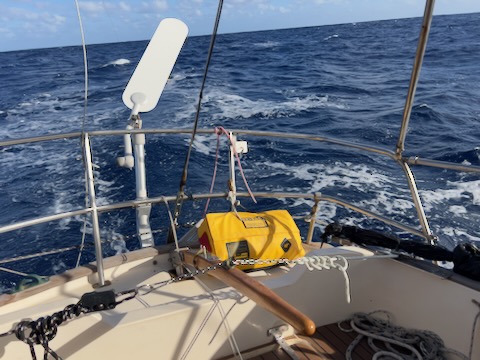
Thursday, January 9, 2025
Sailed most of the night with three reefs on the mainsail. After 3 a.m., I undid the third reefs. There was gusty wind: sometimes it accelerated the boat to more than 7 knots, then died down, and the speed dropped to 5.
In the morning, the wind went away and became a tailsail. I had to lower the jib and remove the second reefs on the mainsail. The speed dropped to a little over 5, or even less. The idyll of the broad reach and beam reach is over, unfortunately. Now it looks like the tailwind will remain for the rest of the voyage. At least not straight astern, but that's good.
By lunch, having finished with the ship's log and editing a film about the passage from Curacao to Hawaii, I, looking at the telltails, racking my brains, decided that the autopilot was simply oversteering. In fact, I'm not running, but broad reaching! And the jib should work. I switch from the autopilot to the windpilot. I raise the jib, take the second reefs on the mainsail. Excellent! Speed 6-7 knots! And the jib does not flap in the shadow of the mainsail. Well, maybe occasionally, when Beruta rolls off the crest of a wave to the leeward side, and even then, the windpilot instantly returns the yacht to the course. Of course, all this is temporary, it only prolongs the threshold of tailwind, which inevitably comes, if not today, then tomorrow, if not tomorrow, then in a few days. Having finished Greene's book on the fundamentals of string theory, where two chapters 8 and 9 were missing, where the multidimensionality of the model and the shapes of the Calabi-Yau space are explained, where 6 or 7 dimensions are curled up so that they become invisible, I started reading a book on the same topic by Maurizio Gasperini "The Universe before the Big Bang. Cosmology and String Theory".
Although string theory is not considered complete and universally accepted, it is currently the best candidate for the theory of everything, including all 4 known interactions: gravitational, electromagnetic, strong and weak. It allows us to look beyond the singularity of the Big Bang and predict what came before it. It also allows us to describe black holes. In other words, it works in any range of energies and space-time scales: from the largest to the smallest, where the existing Standard Model does not work because it is unable to include gravity. The fundamental limitation of the Standard Model is that elementary particles have no size, unlike string theory, and therefore do not have a number of symmetries inherent in string theory.
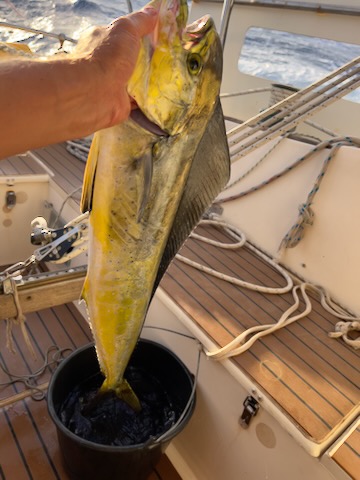
Friday, January 10, 2025
At midnight I woke up from the turbulent water flows along the sides of the Beruta. Speed was over 7 knots! I took the third reefs on the mainsail. Then I sat in the cockpit and watched the speed - almost the same 6.5 - 7 knots. I took in the mainsail completely. The speed became about 6. Then it calmed down a bit, and Beruta was sailing at a speed of 5-6 until the morning, when the wind picked up again. According to the forecast, it was up to 20 knots. In reality, probably 20-25.
The temperature outside is already 21° C, in the cabin 24° C. I got out a blanket. It is cool to sleep under one sheet. Humidity is about 60%. And this is at 17° N! I hope that upon arrival in Hawaii I will still go beyond the influence of the cold Arctic current.
At sunrise, there were exactly 1,500 nautical miles left to Hilo. I have already passed 3,050, if counted by the course, and a little over 3,100 in reality.
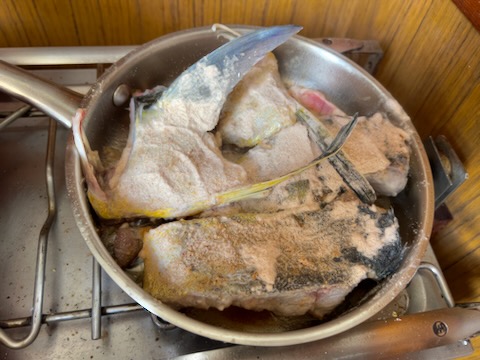
I cast a fishing rod in the hope of catching a tuna. I had just sat down in the lotus position on the yoga mat in the cockpit when the fishing rod started twitching. Instead of tuna, I caught a small mahi-mahi, about the same as the one that had gotten away last time. I decided not to waste time winding the line onto the yo-yo reel, but to just pull it with my hands as fast as possible before the fish got away again. When it was already fluttering in the cockpit, the hook came off. I made it! I gave the poor thing a sip of rum to calm her down while I was cutting her up. Skinny! Her stomach was empty. It's strange that it didn't eat anything overnight. There seem to be plenty of flying fish.
I washed the refrigerator. Water periodically accumulates there, especially quickly if it's not working in freezer mode. I reduced the temperature from 6° C to -4° C so that the fish doesn't spoil. Now at least the refrigerator will work for more than just a pack of butter and a couple of eggs.
Saturday, January 11, 2025
The wind is unstable, sometimes blowing from under one cloud, sometimes from under another. I have to adjust the wind rudder all the time. The waves are forecast to be 2.7 m with a period of 7 seconds. I could switch to the autopilot, but it doesn't work well on such waves, jerking back and forth. In addition, the weather is still cloudy, and I would like to save electricity. Moreover, the refrigerator now consumes more energy, since it freezes the fish. The engine has to run at idle (about 1700 rpm) for at least two hours, which uses about 3 liters of diesel.
The weather cleared up by lunchtime. I pulled the boom to the starboard side so that it would not cover the solar panel near the pilothouse. I am sailing under one jib, because the wind is almost tailwind, 135-150° to the course. The charging current increased to approximately 11-16 amps, depending on the yacht's heel. The more the yacht heels to the south on the wave, the higher the current.
The cabin warmed up to 27° C during the day. Outside it was 21° C. The water was 24° C.
I watched (or re-watched) the French film "The Temptation". It is beautifully shot, has great music and songs, and it's not a Hollywood script.
I finished the book about cosmology and string theory. Didn't delve too deeply into the subtleties of the theory, and besides, the theory itself is only one model of the world, although the most promising, but far from complete. I seem to have grasped the main ideas, and that's enough for now. At least, when I hear the phrase "string theory" - it will no longer be meaningless.
I switched to fiction, and began rereading R. Sabatini. I once read him as a child, but, of course, I don't remember anything anymore. "The Odyssey of Captain Blood" is the first novel that I couldn't tear myself away from until 11 p.m. partially because the events occur in the Caribbean Sea, where I visited many of the islands. And here is a phrase from the text that I especially liked:
Only the sea remained, open to all and especially beckoning to those who felt at odds with all of humanity.
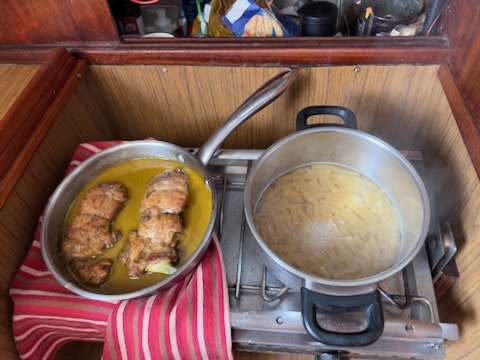
Sunday, January 12, 2025
The morning began with setting the mainsail and lowering the jib. The wind died down. The speed dropped to 4 knots.
The whole sky was covered in clouds again. It even drizzled a little.
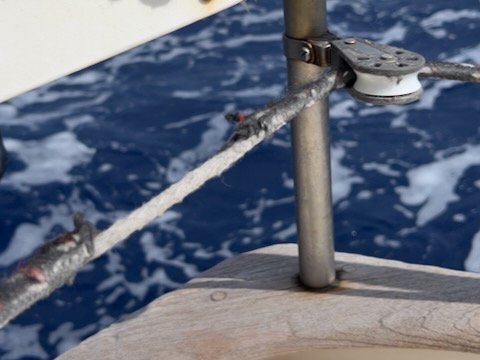
For lunch, I cooked a curry with mahi-mahi and pasta.
I fixed the frayed end of the windpilot steering line. I simply cut off the damaged section of the rope and tied it together. If I have time, I will splice a new one.
The weather cleared up a bit during the day, and at least for some time the batteries were charging. In the evening, I still had to run the engine for a couple of hours.
In the evening I took first reefs on the mainsail just in case until the morning.
Monday, January 13, 2025
Today the fifth week of sailing begins. I crossed 135° W and 18° N, and switched to Anchorage time (UTC-9).
The sky was covered with clouds all day, and the batteries were almost not charging. I did not expect such cloudy weather in the tropics in January.
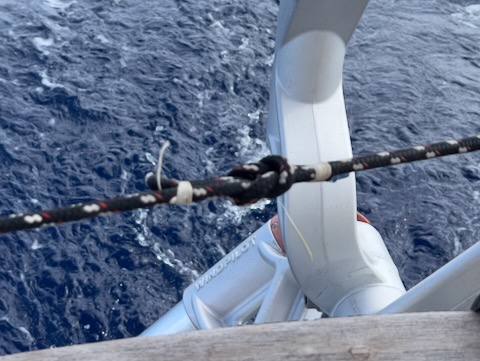
Tuesday, January 14, 2025
The last thousand nautical miles is left to Hawaii, or about 8-9 days of sailing depending on the wind.
I never thought that a square knot could come undone under load. As it turned out - it can! Apparently, the nature of the load and the structure of the rope play a role. In the morning, I had to interrupt my yoga, and redo my repair of the windpilot line. I secured the loose ends of the square knot by tying and sewing them together. I hope that after this it will not come undone.
The weather improved in the afternoon. The clouds in the east, which used to haunt me, left me alone this time. It looks like there will be a moonlit and starry night.
I didn't take reefs on the mainsail for the night - the wind didn't pick up, as it usually did in the evening.
Wednesday, January 15, 2025
It picked up only in the morning. After the first reefs, I even thought about taking the second ones, since the speed through the water had hardly decreased. It reached 7 knots when Beruta sailed down the wave. The speed over the ground was slower by 0.3-0.5 knots, apparently due to an unexpected head current. The current was favorable for most of the voyage.
At night, I woke up from a strange high-frequency creaking. What could it be? There was a suspicion that the mast, boom, boom vang or windpilot steering line were the source of these sounds. But the creaking was not in unison, or rather, not in rhythm with the waves. Going out to the cockpit, I realized who was the culprit of these squeaks. Dolphins! Their group was sailing next to the yacht, and they were talking about something of their own. I even thought that maybe they wanted to tell me something? The thing is that you usually can't hear them, and then suddenly, out of the blue, they did. Of course, the alternative could have been just hallucinations associated with loneliness, but the sounds stopped when the dolphins left.
According to my calculations, the last week of my voyage has begun. The forecast for this week promises a headwind from Friday to Saturday, caused by a strong cyclone passing in the north. The cyclone is far away, but the cold front from it reaches all the way to the tropics. The headwind is predicted to be weak and short-lived. Then it should gradually change to the north and northeast. Theoretically, it can delay my arrival in Hilo until Thursday.
After lunch I loosened the reefs and sailed under full mainsail for the rest of the day and night. The wind was forecast to be 14 knots.
Thursday, 16 January 2025
The wind shifted back and forth during the night. After four hours of sleep I found that Beruta was heading 251° T instead of the expected 276° T. When I went to sleep the yacht was about 6 miles north of the course, and when I woke up she was almost as many miles south.
Today the wind should shift astern, becoming purely easterly, and tomorrow south-easterly, then southerly, south-westerly and westerly, changing on Saturday to north-westerly, northerly and north-easterly, thus making a full circle, following the progress of the cyclone in the north from west to east.
As you know, the southern wind will bring warmth and moisture, and the northern - cold and dryness - everything as expected for a cyclone with a warm sector and a cold front behind it.
As soon as I sat down in the cockpit to have lunch, the rod began to twitch. Having put the frying pan with noodles and fried dorado back on the stove, I took hold of the line and immediately realized that it was too late. As if in confirmation, the bait - a pink squid - was playing behind the stern among the waves. Yesterday there was also a bite, only I did not see it, but I realized that a loop of rope, to which a fishing line and a bungee cord were tied, was outside the railing. Before the bite, this loop was inside the railing. If there is a bite and the bungee cord is pulled, then the rope ends up on the other side of the railing. Previously, fish got away very rarely, but now almost every time - after all, the problem is in the small hook!
I woke up at half past ten at night, having slept for an hour and a half. The yacht was sailing on a course of 300° T instead of 276° T. It was strange, the wind was not supposed to go away until tomorrow. There was nothing to do, I put a torch on my forehead and went to gybe. I had taken in some reefs beforehand. I didn't really want to gybe at a speed of more than 6 knots. On the left tack I managed to go exactly on course. Unfortunately, not for long. The wind returned almost to its previous direction. I didn't gybe a second time, because I wouldn't have been able to go on course anyway. The wind was right astern. Well, I'm gradually falling to the south. But tomorrow the wind will change, I hope.
Friday, 17 January 2025
Late at night I had to get up again to attach a cape to the pilothouse - it started to rain. The whole sky was in clouds. The rain continued intermittently for the rest of the night and all day. Tomorrow will probably be the same. Only by Sunday the weather should improve.
I am sailing with only first reefs on the mainsail. When the wind blows from under the clouds, Beruta accelerates to 6 knots. Mostly the speed is 5-5.5.
At half past ten in the morning the wind finally forced me to make another gybe and temporarily return to the starboard tack. Apparently, because of a huge cloud the wind changed direction so much that the yacht was going almost to the south instead of going west. After the turn it was possible to sail on course for some time. Then I had to go to the port tack again.
Thunder and lightning were added to the large amount of precipitation. It seems that most of the lightning flashed in the clouds. I did not see a single one that went into the water.
At the beginning of the third hour I decided to motorsail. The wind blew and died down, but the batteries still needed charging. There was no sun at all today. Gloomy weather, I wish it would end soon.
Finished reading "Scaramouche" by Sabatini. I liked it even more than the entire trilogy about Captain Blood.
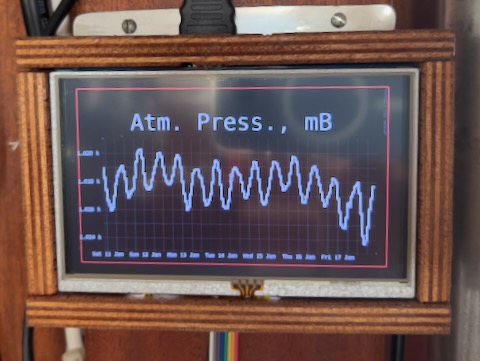
Between 5 and 6 p.m. I passed through a serious cloud, reminiscent of a front. And the wind behaved the same way as if I were crossing a cold front. First southwest, then a little west and immediately northwest. The barometer confirmed my suspicions. The pressure dropped lowest and after the wind changed, it began to rise rapidly. Hmm... I thought that according to the forecast today there should have been something like a warm front, and the wind should have remained south. And then suddenly the north blows! I turned off the engine and went to bed, scolding the weather forecasters for their mistakes. Nevertheless, the worm of doubt still remained.
I woke up before midnight from the beeping of the instruments. I go out to the cockpit - on the autopilot panel there is a warning that it is not on the set course. I look at the chart plotter - it shows that I am on course. Hmm... But the red line indicating the heading has disappeared somewhere. Only the green one is left, indicating the true movement. Strange. I look at the log - the speed is 0.3 knots. Even stranger, I seem to hear the wind blowing. I look at the mainsail, and it is curved in the opposite direction! I see. I was going on autopilot, which held a course of 276° T. The wind changed direction again, and blew from the southeast, as it was in the weather forecast.
I changed the tack from starboard to port. The rain intensified, and a squall began and lasted for about 15 minutes. I had two reefs on the mainsail. I kept wanting to go and get another one, but I felt that the squall would soon end, and then I didn't want to unravel the third reef again. In short, I waited it out without consequences. Lightning flashed in the sky all night.
Saturday, January 18, 2025
The morning was quiet and sunny. I hoisted the jib but it had no use. The line of the front that had passed yesterday was clearly visible in the east. In the west, either a cold front was still looming, or its remnants from yesterday. According to the forecast, the wind should circle today and move from south to north. The wind is very weak, 3-5 knots. I think squalls are still possible.
I checked the fuel level in the tank. I pumped the last canister into the tank. Now I have 90 liters. In theory, I can allow the engine to run at low RPM for a day. There is no wind, what else to do?
I have already covered more than 4,000 nm. 500 left.
At 11:30 a sudden northwest wind blew. According to the forecast, the wind was supposed to be south. I turned off the engine. The close hauled course lasted for about an hour and a half, then everything calmed down again. Even with a full mainsail, the speed dropped to 2 knots. Since 1 p.m. I've been going on the engine again. I took in the jib. I took three reefs on the mainsail so that it would flap less on the waves.
Sunday, January 19, 2025
Only at midday did it start to blow slightly. I replaced the jib with a genoa, which I had written off early, thinking that I would no longer need it on this passage. I raised the full mainsail. The remaining days promise light north and north-east winds. On the last day, they promise a calm with a subsequent change of wind to the south, a consequence of another cyclone in the north.
Now I understand why Hawaii are considered a great place for surfers. Cyclones passing near the islands are the cause of the long ocean swell so beloved by the latter.
If it were not for the favorable current of about one knot, the speed would be 3-4 knots. There is still hope to arrive in Hilo on Wednesday evening, although not as much as before. There are 50 liters of fuel left. Since the intake pipe does not reach the bottom of the fuel tank, then in reality I can count on 35 liters, which in theory at low PRM can be stretched out for a little over 20 hours.
Monday, January 20, 2025
At three o'clock in the morning, I had to take all three reefs on the mainsail in turn. Clouds came in, and the wind blew about 20 knots. Considering that I was going under all sails, 20 knots was too much.
At 5 a.m., however, the clouds dispersed, and everything calmed down so much that there was nothing to do but start the engine.
At 6 a.m., the wind returned. During the day it gradually died down, until by 4 o'clock in the afternoon it had died down completely.
This is the sixth week of my voyage. I crossed the 150° N., and switched to Hawaiian time (UTC-10).
I finished Sabatini's novel "The Return of Scaramouche". Even more interesting than the first novel about Andre-Louis Moreau. It's a pity that it is not included in the school curriculum on the history of the French Revolution, although, of course, this is not the main topic, but it is covered well enough. I kept catching myself thinking that the revolution of 1917 in Russia was not particularly different: the same terror, the struggle for power between factions and the dictatorship in the end: they had Robespierre, we had Ulyanov.
Now I started reading another historical novel by Sabatini "The Dogs of God" about Francis Drake, the man who was the first to sail around the world, although he is not the main character of the novel. To my surprise, he was also a famous pirate!
Tuesday, January 21, 2025
I was sailing on the motor until 5 a.m. At 5 it blew slightly, as promised. True, they promised the wind until noon, but it died down in half an hour! It doesn't want to obey the forecasters' predictions, putting them in the awkward position of deceivers for the umpteenth time.
Having flapped the sails until 8 a.m., I measured the fuel level in the tank. There were still 40 liters. I started the Yanmar again, counting on the fact that I could afford it for another 12 hours.
It is some kind of Murphy's Law! When there are a little over a hundred nautical miles left until the finish line, the wind starts to act up, the current becomes contrary, the sky is covered with clouds, from which a light rain falls. At least there is no thunder or lightning yet. And there is not enough diesel fuel to finish on the motor. I continue to reassure myself with the old days, when, apart from sails and oars, there were no other means of propulsion at the sea. Calm? Well, they wait for the wind. Headwind - they tack, if conditions allow. If not, they drift and wait for the wind to change.
I was motoring until 10 p.m. There should have been 20 liters left in the tank, of which, probably, only 10 could be taken. I left a third of the mainsail, although there were no particular waves, turned off the autopilot, and went to bed.
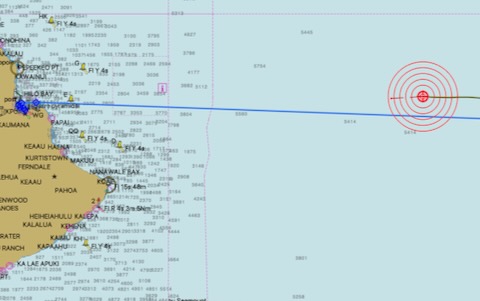
Wednesday, January 22, 2025
At about six in the morning I went out to the cockpit. The sun had not yet risen. A slight wind was blowing from the south. According to the forecast, it would blow at about 11 o'clock. I looked at the chart plotter. During the night, Beruta had drifted north for three miles.
Well, okay. I set the genoa, remove all the reefs on the mainsail. Speed 5-6 knots. 94 miles to Hilo. Now the arrival time in Hilo is 12 o'clock at night.
Well, nothing can be done. Either I'll lie down to drift until the morning on the approach to the island, or I'll try to find buoys in Reed Bay in the dark. If the embankment and the port are well lit, then in theory everything should be quite visible. There is no hope for the moon. It is approaching the new moon, and the moonrise is now only close to the morning.
At lunchtime, knowing about the wind increase from the weather forecasters to 17 knots, and probably more, until big waves dispersed, I prudently replaced the genoa with the jib and took two reefs on the mainsail. The speed was still from 6 to 7 knots relative to the water, a knot less relative to the ground due to the oncoming current. The pressure dropped as never before. Another cold front was approaching, which should pass through the Big Island tonight. The wind kept setting, and soon the reaching was replaced by the close hauled.
The sun, apparently, disappeared not behind the horizon, but behind the island. The clouds in the west, foreshadowing the cold front, did not allow me to see it well. The island nevertheless appeared in the darkness of the approaching night. I had to take third reefs on the mainsail, lower the regular jib and raise the storm one above it. The wind was above 25 knots. This was not in the forecast. The speed was still 6 knots.
At about 7 p.m., the mainsail had to be removed, as much as I wanted to get into the island's shadow faster. It felt like 30 knots or more. The speed dropped to 2-3 knots. I was basically happy with that. At that speed, I would have arrived in Hilo at dawn. I decided to take a nap.
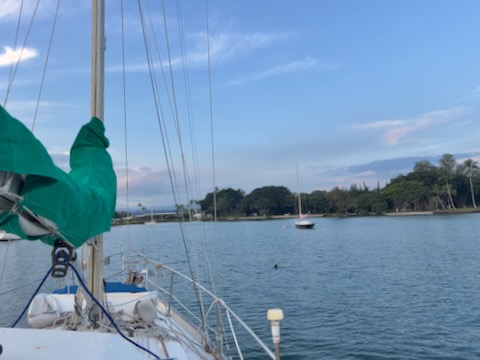
Thursday, January 23, 2025
I woke up at midnight. Beruta was heading back on the windpilot. The wind changed from southwest to north, like last time after the front passed. This was not in the forecast.
I gybed, returning to the previous course. Speed became 1-2 knots. Too slow under one storm jib. I set the mainsail first with three reefs. Then I unravel one by one. The speed is still low. I need to change the storm jib to a regular one. It's not difficult, because I didn't remove the jib one at all, I just lowered it. No sooner said than done. The speed became 3 knots - still not enough.
By 2 a.m. I removed all the reefs on the mainsail. Speed was still 2-4 knots. The wind practically died down. That's how it should have been according to the forecast, but the southwest wind died down there, because I was in the shadow of the island. The island doesn't create a shadow for the north or northwest winds. Damn these forecasters.
There are 15 miles left to Hilo. If it dies down completely, I can try to get there by motor.
At 3 a.m. I started the motor at 1,600 rpm. Half an hour later the wind became headwind. I removed the jib and took three reefs on the mainsail so that it would flap less. Speed was 3-4 knots due to a head current of one knot. A pleasant aroma of tropical greenery wafts from the island, although it is still 10 miles away.
At 6:45 a.m. I tied myself to a mooring buoy in Reed's Bay.
I had breakfast and registered my arrival via the CBP ROAM app. This is awesome! No need to go anywhere: it took 15-20 minutes to do everything, plus I got a cruising license for a year! You can only stay here for 59 days without a local captain's license anyway. But I don't need more.
I just need to find out in DOBOR where and how to pay for the buoy. I called them in Honokohau. They gave me a phone number in Hilo: 1-808-933-0414. Monica answered. She said that I couldn't stay on the buoy because it belonged to someone. I might anchor nearby. Then I needed to come to her office to formalize it. They are located at 210 - 75 Aupui St.
Hmm... I read on noonsite.com that the anchor in Reed's Bay held very poorly. The chart indicates that the bottom here is silt over rocks. Several yachts are moored along the breakwater. But there is a coral reef there! Firstly, you don't want to damage the corals. Secondly, you can get the chain tangled in them so much that you will have to simply abandon everything: both the anchor and the chain, if you can't untangle it. An alternative anchorage is near the mouth of the Wailoa River. The chart shows mud as the bottom's composition - that's what you need!
First, however, I need to go for diesel. I found a gas station about 300 meters from the end of Reed Bay. Diesel fuel is more expensive than gasoline here! More than $5 a gallon.
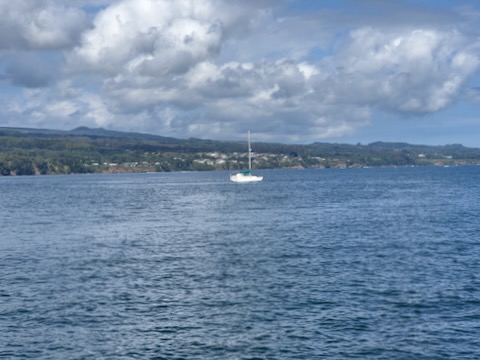
After pouring two cans of fuel into the tank, I took off from the buoy and first went to the breakwater in the hope of finding a place free of corals. However, the water there is as opaque as in Reed's Bay. Even at a depth of 2-3 meters, the bottom is not visible. Then I went to the mouth of the Wailoa River. Nothing is visible there either. Trusting the chart, I dropped the anchor at a depth of 5 meters away from the passage leading to the mouth of the river. There are several sailboats moored near the wall and motorboats. On the shore is a yacht club and a canoe club. You can't stand in their way. There is no one else at this anchorage except me.
While I was maneuvering in search of a place and measuring the depths, a coast guard boat was nearby. Then, when I was already heading to the DOBOR office in a dinghy, an inflatable rib boat with six guards motored besides me. We waved to each other in a friendly manner. Apparently, I did not violate anything, otherwise I should have been reprimanded.
I reached the office in a dinghy. Having attached the dinghy to a palm tree with a chain and a padlock, I went to Monica. I was greeted quite warmly. Monica was not very pleased that I changed the location of the anchorage. She would have preferred me to be either in Reed's Bay or near the breakwater. After my explanations and intention to move to Honokohau in a couple of days, she allowed me to stay there without taking any money from me. Moreover, she called her boss in Honokohau and booked me a slip for a week, starting Monday. She also helped me fill out the necessary paperwork, and made copies of the yacht registration, insurance, and my captain's license! All three documents are necessary for staying in Hawaii - I was told about this on the phone. Actually, I don't know how necessary they are, but she told me to bring them with me. I also emailed her the cruise license and customs clearance. She hadn't known that this can be done online using the ROAM app, and had insisted that I go to their office to get the necessary paperwork.
When I asked where I could buy groceries, Monica advised me to go to KTA - a supermarket about one kilometer away from her office. On the way there will be an AT&T office, where I can buy a local SIM card.
Having bought an unlimited SIM card for $55 per month (on the continent it cost $50, and with a discount even $40), and the necessary products, especially dairy products, fruits, vegetables and fresh bread in a bakery along the way, I returned to the yacht and threw a feast for the whole world.
In total, the entire passage took 38 days instead of the planned 39. The average speed along the route was 5.1 knots. In total, I covered 4,619 miles, about 70 miles more than along the route.
All pictures from Big Island are on Google Photos.

